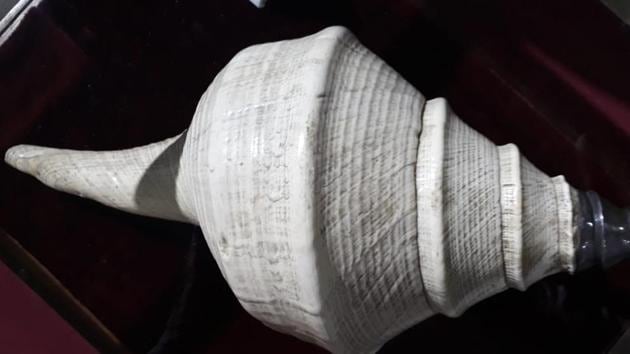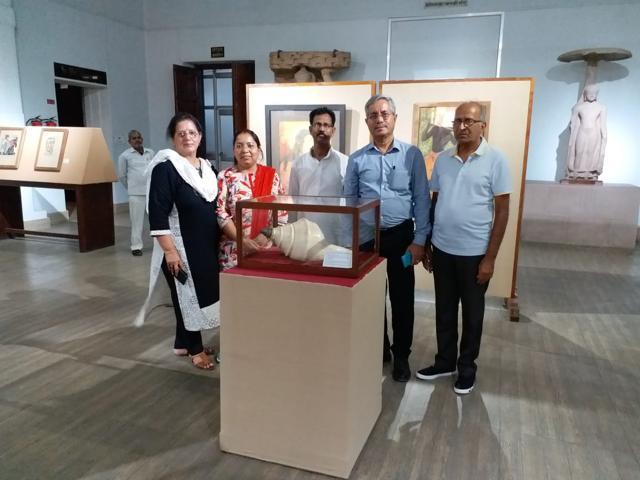Tipu Sultan’s conch shell a big draw at BHU’s Bharat Kala Bhavan
Tipu Sultan’s military commanders carried the conch shell and presented it him as and when required. The conch shell remained in the Mysore ruler’s possession till his death.
A conch shell, which the 18th century ruler of Mysore Tipu Sultan is said have blown to signal at the beginning or end of a battle, has now become a big draw for visitors at Bharat Kala Bhavan, a museum at Banaras Hindu University (BHU).

The conch shell was exhibited in the central hall of the museum on the occasion of International Museum Day on May 18 (Friday).
Bharat Kala Bhavan director, Professor AK Singh said, “Preserved at the Bharat Kala Bhavan, this conch shell is of the late 18th century. It is 15 inches long and 10 inches high. Tipu Sultan used to blow this conch shell before the beginning and the end of a battle.”
As visitors came to know about the artifact’s association with Tipu Sultan, who offered stiff resistance to the British, they expressed keenness to know more about it.
Dr RP Singh, a consultant at Bharat Kala Bhavan, said: “This is a unique conch shell. It is comparatively big. It has been preserved in a transparent glass box on a table. According to information available, it remained in possession of one of the trusted commanders of Tipu Sultan.”

Following the huge public interest in the conch shell, Bharat Kala Bhavan has decided to make it a permanent exhibit.
“It is exhibited at the central hall for few days at Central Hall. But we have decided to exhibit it permanently in a gallery of the museum so that the visitors may see it,” Dr RP Singh said.
Tipu Sultan’s military commanders carried the conch shell and presented it him as and when required. The conch shell remained in the Mysore ruler’s possession till his death.
Dr Singh said Shah Vanshavali, a history book published in 1969, mentioned that after Tipu was killed in the Fourth Anglo-Mysore war in 1799, Lord Cornwallis presented his conch shell, a sword, a dagger and a cymbal to Shah Manohar Das, a supplier of rations to the East India Company. Cornwallis provided these articles to Das as he was impressed with his services to the company.
Dr Singh said Rai Krishnadas, one of the founders of Bharat Kala Bhavan, later received the conch shell from the descendants of Shah in the early 1960s.
It was registered in the museum on November 22, 1994. Before that too, it was preserved unnumbered at Bharat Kala Bhavan and hence not many knew about it.
“The tradition of blowing conch shell began during Mahabharat era. Shankhnad or blowing conch shell was a common practice that was followed by rulers in different parts of India. When the Mughals established their rule in India, they used a trumpet (turahi) to signal the beginning of a battle. Tipu Sultan, however, used conch shell as he was an Indian and knew Indian traditions,” said Professor Rajiv Srivastava of BHU.
Tipu Sultan evokes intense admiration and hate in equal measure. He is hailed as a freedom fighter for fighting the British, but his critics — the Bharatiya Janata Party (BJP) and the Sangh Parivar -- say he killed Hindus and Christians during his expansion into the region in the late 1700s.






